Viola da gamba Bass
label Joannes Florenus Guidantus
Catalog 155 – Viola da gamba, bass, 18th C., possibly Italian
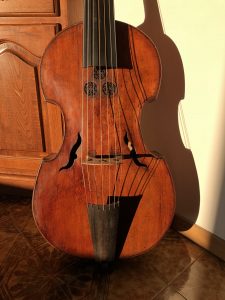 |
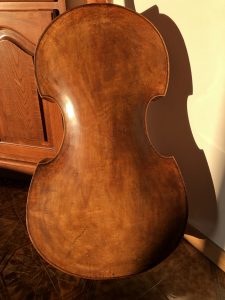 |
The rounded back dates from a posterior restoration as cello, and has been retained in the restoration as a viola da gamba..
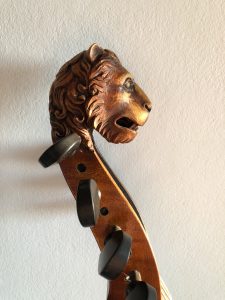 |
 |
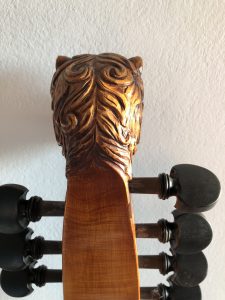 |
Viola da gamba, bass, 18th C., possibly Italian, bearing a label:
Joannes Florenus Guidantus Fecit / Bononiae Anno 17_5
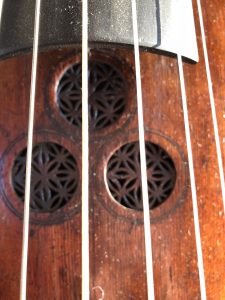 |
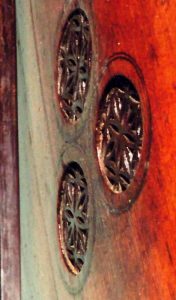 |
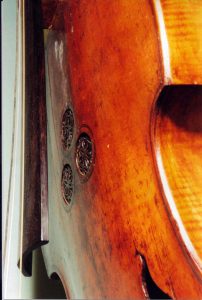 |
The three-part rosette is very interesting

The sound holes are in the shape of a flame

The original label inside the instrument
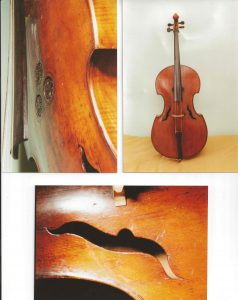 |
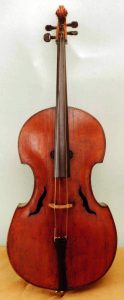 |
This instrument entered in the collection as a cello.
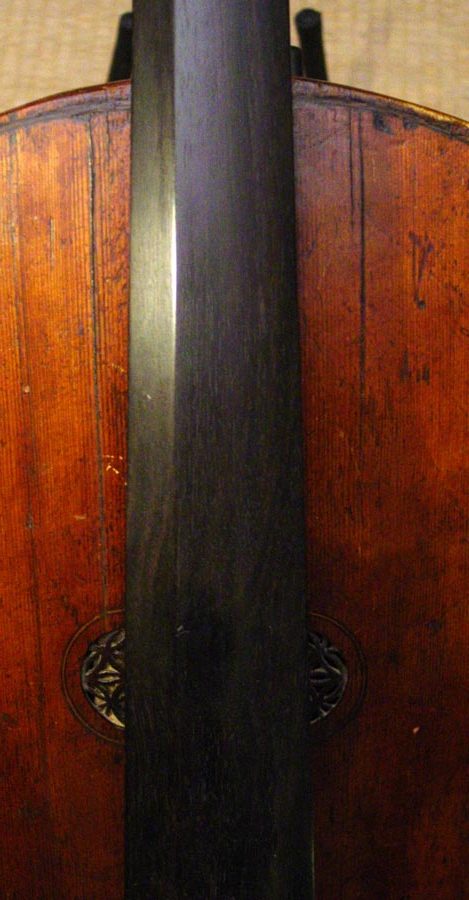
This instrument presents a perplexing puzzle:
1. Flat back:
It is evident from the ribs that the instrument originally had a flat back, sloped towards the neck, as is usual on violas da gamba. Therefore most likely, the instrument started its existence as a bass viol.
2. Sympathetic strings:
The presence of the 14 pins located on the lower ribs next to the tailpiece, are evidence that the instrument at some point has a set of 14 sympathetic strings, as common on both the viola d’amore and the baryton. This made us think that it had perhaps been a baryton. However, the narrow spacing of the flame holes precludes the possibility of a second choir of sympathetic strings sufficiently spaced to be plucked. Therefore we have discarded the possibility that it was ever a baryton.
3. Shaped back / plugged holes
The instrument arrived in our collection as a cello. The shaped back was likely added at the point of its conversion to a cello. The fourteen holes for the attachment of the pins for the sympathetic strings were probably filled in with wooden plugs when the instrument was transformed into a cello.
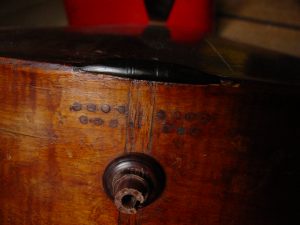
So what was it originally?
The hybrid – a bass viol with sympathetic strings, may have been a ““Viole d’Orphée” or a “violoncelle d’amour” at some point. Both of these existed for a brief period toward the end of the 18th C. in France. See the texts below.
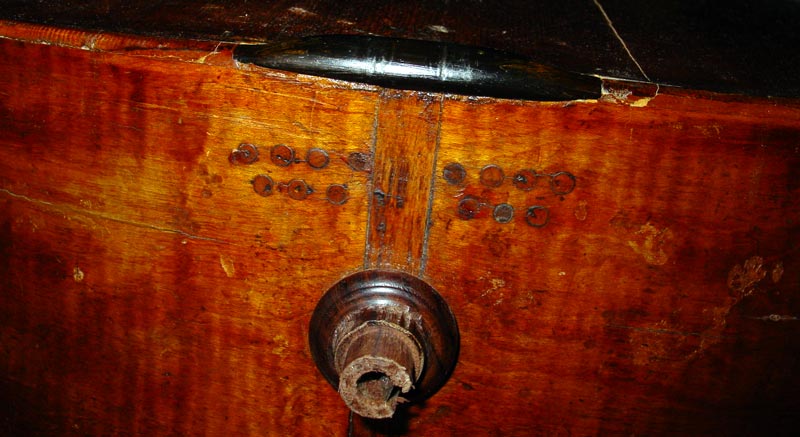
So, we conclude, based on the evidence, that the original was a bass viola da gamba. At some point towards the end of the 18th C. it was converted to a viola d’orphée or a violoncello d’amore, gaining the sympathetic strings and possibly the shaped back. At some later point, it was converted into a cello, losing the sympathetic strings and gaining a curved back.
It was decided to restore the instrument as a seven string bass viol, conserving, however, the current shaped back, since it has already been part of the history of this instrument for over a two hundred years.
La viole d’Orphée fut décrite par Michel Corrette dans un traité daté de 1781 concernant également la contrebasse et le violon alto.
Corrette donne quelques détails simples pour transformer une viole, instrument à cordes de boyau fretté accordé en quartes et tierce, en une viole d’Orphée. Il faut :
- changer la nature des cordes, en utilisant du fer, du laiton jaune et du laiton rouge ;
- changer l’accord de l’instrument, en do, sol, ré, la et mi. Les cordes de la et mi sont doublées, à la façon des chœurs de luth. Enfin, l’archet, de type Tartini, est tenu la paume de la main vers le bas.
La transformation tend donc vers le violoncelle par l’accord. Il était courant, à la fin du xviiie siècle de transformer les violes de gambe, tombées en désuétude, en changeant le manche, en coupant la caisse quelquefois pour la rétrécir, souvent pour en faire “tomber” les épaules. La viole d’Orphée entre dans ce concept de réactualisation d’un instrument en perte de vitesse. La transformation est plus simple, puisqu’il n’est même pas nécessaire de toucher à la structure de la viole : changement des cordes, et adaptation du cordier et du chevalet, éventuellement lignes sur le manche dont on n’est pas certain qu’elles soient en relief.
“Violoncelle d’amour…implique le montage, en plus des quatre cordes habituelles, d’une cinquième corde plus aigüe : une chanterelle accordée en mi. Faites de boyau et tendues sur une longueur de 690 mm, elles devaient être accompagnées de douze autres cordes de laiton ou d’acier passant sous la touche et traversant le chevalet comme cela se pratique sur les violes d’amour.” (Christian Raoult)
| Body length | mm |
|
Upper width
|
mm |
| Middle width | mm |
| Lower width | mm |
| Rib height | mm |
| String length | mm |